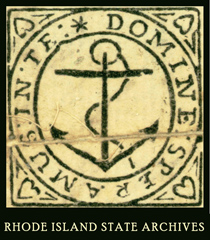Historical note
The Department of Transportation was established in 1970 by statutory authority RIGL§42-13-1. This department replaced the Department of Public Works created by Chapter 5 § 38 of the 1938 General Laws and repealed by Chapter 111 § 1 of the Public Laws of 1970. The Department of Transportation is responsible for the implementation of both short and long-term transportation improvements for the State of Rhode Island. Included in this effort is the maintenance of over 1,300 miles of roadways, 750 bridges and over 800 traffic signalization systems. The Department is also responsible for maintaining a continuing comprehensive transportation program by coordinating and performing planning functions for all modes of transportation. The mission of the Rhode Island Department of Transportation is to maintain and provide a safe, efficient, environmentally, aesthetically and culturally sensitive intermodal transportation network that offers a variety of convenient, cost-effective mobility opportunities for people and the movement of goods supporting economic development and improved quality of life. Clarence L. Hussey (1885-1925), was Rhode Island's first bridge engineer. Hussey was a nationally-prominent bridge engineer noted for his original contributions to the construction of concrete arch bridges and concrete engineering technology, including an elegant, cost- and weight-saving, modified-spandrel, concrete-arch bridge design (Henderson 1926:1632-1633, Providence Sunday Journal 1925:3). Under Hussey, the bridge division utilized standardized plans for bridge replacement and selected concrete for the major bridge building material due to its strength, longevity, and low maintenance requirements, as well as ease of construction. This factor encouraged the use of local contractors (Clouette and Roth 1988:31). These bridges also included standardized features such as bush-hammered, rectangular, decorative panels located so as to masic joints, and blue-on-white glazed porcelain tiles at the parapet railing ends that Indicate the bridge name, number, contractor, and responsible state agency, the Board of Public Roads.


